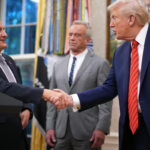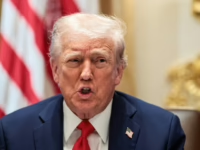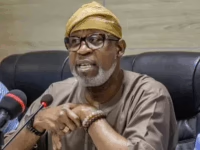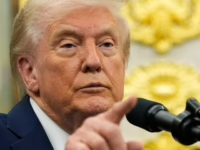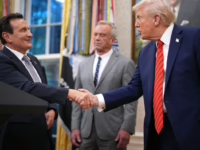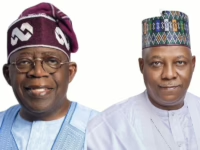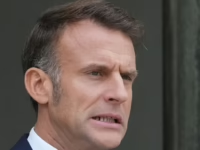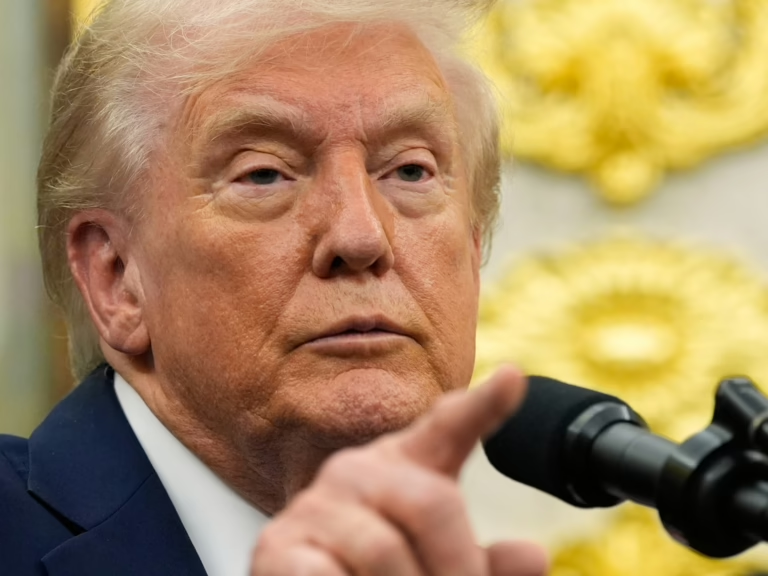President Donald Trump has announced a new agreement with AstraZeneca, a leading UK-based pharmaceutical company, aimed at providing Americans with more affordable prescription medications.
This marks the second major deal of its kind, following a similar arrangement with Pfizer, designed to reduce drug prices by offering medications directly to consumers.
During a public event in the Oval Office, Trump welcomed AstraZeneca’s CEO, Pascal Soriot, to formalize the partnership. Trump hailed the deal as “a landmark step forward in our mission to make prescription drugs more affordable for every American.”
He emphasized that consumers could anticipate substantial price cuts, sometimes exceeding 100 percent, a claim he has made repeatedly in his efforts to highlight dramatic savings on popular treatments.
For instance, Trump cited asthma inhalers, predicting a price reduction of 654 percent, describing the inhaler as a “high-demand medication.” He also reiterated previous assertions that some drugs might see price drops as steep as 1,000 percent.
A central pillar of Trump’s healthcare agenda has been the push to align U.S. drug prices with those of other developed nations, a policy he refers to as “most favored nations pricing.”
This approach aims to bring American drug costs down to levels comparable with international markets, though Trump has often characterized it as securing “the lowest prices worldwide.”
AstraZeneca follows Pfizer as the second pharmaceutical giant to enter into such an agreement. Pfizer’s deal, announced last month, also includes participation in Trump’s planned online marketplace, TrumpRx, which aims to connect consumers directly with drug manufacturers.
However, Pfizer clarified in a statement that the agreement also serves to protect the company from the steep tariffs Trump had threatened to impose on foreign drug manufacturers.
“This deal provides us with the certainty and stability needed regarding tariffs and pricing, which have previously depressed industry valuations,” said Pfizer CEO Albert Bourla.
At the Oval Office event, Health and Human Services Secretary Robert F. Kennedy Jr. praised the administration’s use of tariff threats as leverage in negotiations.
“The president recognized a strategic advantage we hadn’t fully appreciated, which came through the efforts of Commerce Secretary Howard Lutnick and the tariff strategy,” Kennedy remarked. “This leverage was crucial in securing these agreements.”
These deals followed Trump’s September ultimatum threatening a 100-percent tariff on pharmaceutical imports unless companies committed to building manufacturing facilities in the U.S.
Trump stated on his social media platform, Truth Social, that tariffs would be waived if construction on such facilities commenced.
Although the tariffs were scheduled to take effect on October 1, Pfizer’s agreement, announced on September 30, led to a postponement of the tariffs.
During the ceremony, Soriot confirmed that AstraZeneca had also negotiated a three-year exemption from tariffs, agreeing to boost U.S. investments to $50 billion by 2030.
“I am grateful to Secretary Lutnick for granting us this tariff reprieve as we work to localize the production of our remaining products,” Soriot said. “While most of our medicines are already produced domestically, we are committed to transferring the rest here.”
Just a day prior, AstraZeneca announced plans to build a multi-billion-dollar manufacturing facility in Virginia, focusing on treatments for chronic illnesses-a key priority for the Trump administration.
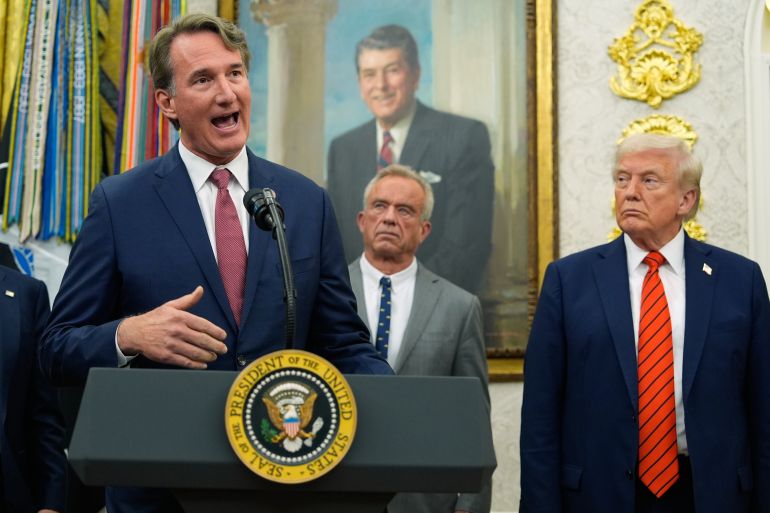
Trump credited his tariff threats as the driving force behind these pharmaceutical agreements. When asked if there was another way to bring AstraZeneca to the negotiating table, he responded candidly.
“I doubt I could have convinced him otherwise,” Trump said, gesturing toward Soriot. “Behind closed doors, Pascal admitted that the tariffs played a significant role in his decision.”
Since beginning his second term, Trump has frequently used tariffs and the threat thereof as a strategic tool to influence foreign companies and governments to align with his administration’s goals.
He has even described the word “tariff” as “the most beautiful word” and celebrated the announcement dates of new tariffs as “Liberation Day.”
Earlier this year, however, it was uncertain whether these aggressive tactics would yield results. In May, Trump issued an executive order directing the government to take “all necessary and appropriate measures” against countries whose policies were perceived to inflate U.S. drug prices.
He also tasked Secretary Kennedy with developing “direct-to-consumer purchasing programs” to enable pharmaceutical companies to offer discounted medications.
Despite these efforts, Trump lacked the legal authority to mandate participation in such programs.
In July, he escalated pressure by sending letters to major drug manufacturers, warning them to reduce prices or face the full force of government action to end “excessive drug pricing.”
That same month, Trump hinted at imposing tariffs on imported medicines.
“We will announce something soon regarding pharmaceuticals,” he told a cabinet meeting. “We’re giving companies about a year to comply, after which imported drugs will face tariffs.”
“These tariffs could be as high as 200 percent,” he added.
The “most favored nation” pricing strategy was an initiative Trump attempted but failed to implement during his first term from 2017 to 2021.
Its future under his current administration remains uncertain. The TrumpRx platform, which the president insists he did not personally name, has yet to launch but is anticipated to go live in 2026.



